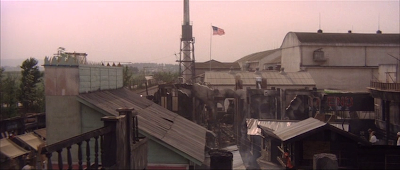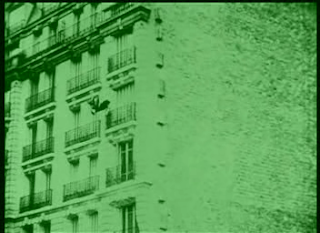The
year’s drawing out to a close and it’s featured a number of revelatory moments
in terms of my engagement with cinema. My viewing of films was abundant and
fertile – if not in regards to the number of films I watched, then definitely
for the variety I did. I will issue an year-end summary where I will list the
best of the year, but till then, very brief notes on three great recent films
(in this case, recent being post-1990):
Limits
of Control (2009) / Jim Jarmusch
I did an
essay a little-time ago about how most truly great contemporary films reflect
on the uber-globalised world we inhabit right now as also on the anxieties,
insecurities, modified forms of communication, political implications and
benefits of this new arrangement. With his last film, however, Jarmusch extends
that discussion even further logically – for him, a discussion of globalization
must yield a discussion of cultural pluralism, destruction of conventional
symbols (and subsequently, the prejudices they result in), understanding (which
is always so much tougher than just acceptance)
and only through all this, a truly globalised world, which exists not merely as
a notion, but as a successful concept. Each character in the film battles/defies
pre-determined conceptions about themselves; these are formed as a result of conditioning
and awareness that result from the primary tools that humans use to recognise each other: languages and
appearances (costume, colour of skin, hair colour, nakedness). Before each
exchange, the first question the lead character is asked is: ‘Do you speak
Spanish’? – he doesn’t, but that will not, must
not hamper exchange. As he negotiates the Spanish-town geography, a few
children approach him and ask him: ‘Are you an American gangster?’ Why do they
ask him that? Why do we wonder the same? It is because we are conditioned to believe that a lone, serious,
lanky shape that wanders the streets of a modern city must belong to
a criminal – it is what cinema has taught us, it is what we believe. The
man-with-no-name is an ancient creature, anachronistic in today’s world; a man devoid
of an identity is an inconceivable creature in this newly porous world, for if
he has no passport, no driving license, no social media existence, no political
affiliation, how do we identify him? And if there is no identification, how can
there be any categorization? The world arranges itself into a single,
universal culture at a pace so swift that man, the eternally rationally
creature, will look for ways in which to arrange and classify this increasingly
torrential flow of information, people, ideologies, social structures and the
like – for the greatest horror of mankind is to exist in a world that is
mysterious to him, that he cannot understand, that he cannot master. But as
Jarmusch posits, the more we attempt to control the world we live in, the more
it will escape us: if there is anything that has limits, it is not how much of an enigma the world can be, but the control we have over its eternal malleability. An image we imagine to
be a painting will convert into an actual
scenery, a naked girl will turn into a movie-reference, a small, tiny bistro
will suddenly turn into a giant interior location the
moment the lead character will turn his head to look left (after all, in
cinema, it is the direction of the human eyeline that illuminates dark corners
and reveals new spaces; human vision is like torchlight in cinema, it is the ancient
discoverer) and the ‘American gangster’ lead, in the ultimate scene of the
film, will recede into a toilet, discard his flashy suit, wear a jumper with
the Senegalese flag on it and walk out of the building (thereby breaking our movie-audience
perception of him). In the final seconds, the film, hitherto shot with the
camera firmly and professionally set on the tripod, will suddenly attain a vitality
when someone will remove it from the clamp and swerve it a little to allow it
to register a soft-focus, badly lit blurry image of the exterior – right in
front of our eyes, the entire universe of the film will self-destruct.
Nothing, in a world that changes so quickly, will exist as we know it.
Cold
Harvest(1999)
/ Isaac Florentine
This
is the sort of cinema-folding-back-onto-itself masterpiece that is rare to see
in the 21st century, where everyone seems desperate to move forward
and break away (some aesthetically, some through the use of technology and finally,
some by bullshitting their way through). This Florentine masterpiece treads
genre-based iconographies and movie-universes the way most films can only
tread, say, a scene or a narrative.
In
a post-apocalyptic world, people wear dusters, enter salons, talk tough, sweat
profusely, sling guns, duel like cowboys (there is a final showdown rapidly cut to a swelling-up music score as well) and bathe like actresses from
a French period-drama. The lead, played by Gary Daniels, is introduced in a scene borrowed verbatim from The Good, the Bad and the Ugly. Apart from iconography-loans from Spaghetti Westerns, the film is also, in parts, a chase-drama, a mutant film, a
sci-fi film (the production design includes a lot of things with buttons on
them, a control room setup, tracking-and-homing devices), a good ol’ action
film, a strange childhood grudge-revenge film (the villain and the hero share a
childhood rivalry) and there is also an a sentient benevolent race of gypsies who speak English like they
are in Star Wars. There are injections also of post-punk, lots of leather and chain gangs like Sogo Ishii’s early 80s films. It is as if Florentine
believes that if the world were to enter an apocalypse, it will collapse inevitably
into a series of endless movie-homages.
Still,
one of the great achievements of this film is the very complex psycho-sexual
relationship between the female lead and her brother-in-law, the hero. It is
rendered sexless by the virtue of her being pregnant (and of course, since it
is all just like Civil War, preggers equals pure) but it is also simultaneously
strange because the hero and his brother were twins, so that her brother-in-law
looks just like her dead husband. Also, the villain Bryan Genesse inhabits this
kaleidoscopic, multi-dimensional world perfectly, adding a baritone to his
voice and squinting whenever he can, it is a tremendous performance in a
tremendous film.











































